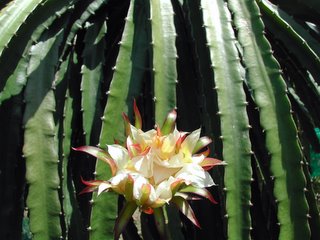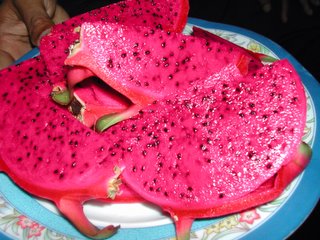

Dragon fruit is a new fruit type that has been cultivated in Malaysia and the Malaysian fruit industry began to grow rapidly after 1980. The government encouraged the development of fruit estates by providing farmers with incentives and technological back-up facilities in the growing, processing and marketing of fruits.
Malaysia is endowed with a climate which permits the cultivation of many different types of fruit. Some of the fruits grown here are native to this part of the world and many related species still grow wild in the primary forests of the country. Indigenous fruits include the mangosteen, durian, rambutan and a number of species of banana.
Malaysian fruits can be grouped into two categories: firstly, seasonal fruits which come into bearish during specific periods of the year and secondly, the non-seasonal fruits which are productive throughout the year.
In general, under prevailing climatic conditions, seasonal fruits are subject to two main reasons, the first and heavier being the period between June and August, while the second season prevails between November and February.
Traditionally, Malaysian fruits are grown on smallholdings established primarily for family consumption with any surplus sold to local markets. There are over 135,000 of these holdings in peninsular Malaysia, ranging from one to two hectares each in size. Most are planted with two or more types of fruits.
Present Status
The first organized effort by the government to expand and rehabilitate fruit smallholdings was in the early 1960’s with the implementation of the Agricultural Inputs and Diversification Scheme. Subsidies were provided to encourage the establishment of small orchards and the replanting of unproductive fruit trees grown around homes in the village. The fruit industry received little attention before this, with development priorities being concentrated n the major export crops and such as rubber, oil palm, coconut and cocoa.